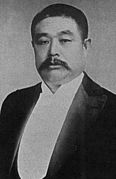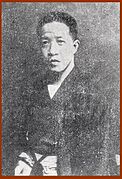Republic of China National Assembly election, 1912
|
|
|||||||||||||||||||||||||||||||||||||||||
|---|---|---|---|---|---|---|---|---|---|---|---|---|---|---|---|---|---|---|---|---|---|---|---|---|---|---|---|---|---|---|---|---|---|---|---|---|---|---|---|---|---|
|
|||||||||||||||||||||||||||||||||||||||||
|
870 seats to the National Assembly (274 seats to the Senate + 596 seats to the House of Representatives) |
|||||||||||||||||||||||||||||||||||||||||
|
|||||||||||||||||||||||||||||||||||||||||
|
|||||||||||||||||||||||||||||||||||||||||
The 1912 Republic of China National Assembly elections, held in December 1912 to January 1913, were the first elections for the new founded Republic of China Senate and House of Representatives.
The poll was indirect as voters chose some 30,000 electors who chose about 2,000 members of the provincial assemblies and 596 members of the House of Representatives. which caused instances of bribery. 274 members of the Senate were elected by the members of the provincial assemblies who were elected in 1909. Adult males over the age of 21 who were educated or owned property and paid taxes and who could prove two-year residency in a particular county could vote. An estimated 40 million, 4-6% of China's population were registered for the election. The Senate was elected by the provincial assemblies which had themselves been elected in 1909 during the Qing dynasty. The president had to pick the 64 members representing Tibet, Outer Mongolia, and Overseas Chinese due to practical reasons. However, these elections had the participation of over 300 civic groups and were the first and most competitive nationwide elections in Chinese history.
The Nationalist Party (Kuomintang) led by Song Jiaoren won a plurality in both houses of the assembly and expected to become the Premier. By order of seats, the Republican, Unity, and Democratic (formerly Constitutionalist) parties later merged into the Progressive Party under Liang Qichao, became the main rival to the Nationalists.
...
Wikipedia




